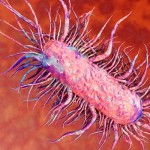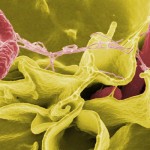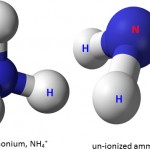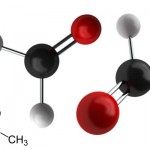Research
H1N1
Title: Ability to reduce H1N1
(ANTIVIRAL EFFICACY)
Date: September, 10, 2010
Tested by: Kitasato Research Center of Environmental Sciences, Japan
SUDO Premium Engineering Co., Ltd., Korea
* testing was done in a controlled setting, and the results of this test do not ensure the same affects in actual room conditions.
Results: In this test, the ion cluster appears to be affective against a virus strain called Influenza A (H1N1). When the virus was exposed to the ion cluster for 0.5, 1 and 2 hours, infectivity was decreased by 1.2log10 reduction.
E-Coli
Title: Ability to reduce E-Coli (ANTIBACTERIAL EFFICACY)
Date: June, 18, 2010
Tested by: Scientec Lab Center Co., Ltd., Korea
SUDO Premium Engineering Co., Ltd., Korea
* testing was done in a controlled setting, and the results of this test do not ensure the same affects in actual room conditions.
Results: The Nutrient Agar Medium Method of testing was conducted on the bacteria called Escherichia coli (E-coli). Bacteria was spread in a nutrient agar medium and put in an area with the cluster ionizer for four hours. Culture was incubated at 35°C for 24~48 hours. A reduction rate of 98.8% was calculated.
S. Aureus
Title: Ability to reduce S. aureus
(ANTIBACTERIAL EFFICACY)
Date: June, 18, 2010
Tested by: Scientec Lab Center Co., Ltd., Korea
SUDO Premium Engineering Co., Ltd., Korea
* testing was done in a controlled setting, and the results of this test do not ensure the same affects in actual room conditions.
Results: The Nutrient Agar Medium Method of testing was conducted on the bacteria called Staphylococcus aureus (S. aureus). Bacteria was spread in a nutrient agar medium and put in an area with the cluster ionizer for four hours. Culture was incubated at 35°C for 24~48 hours. A reduction rate of 99.5% was calculated.
Salmonella
Title: Ability to reduce Salmonella (ANTIBACTERIAL EFFICACY)
Date: June, 20, 2011
Tested by: KCL Co., Ltd., Korea Director of Korea Environment Merchandise Testing Institute SUDO Premium Engineering Co., Ltd., Korea * testing was done in a controlled setting, and the results of this test do not ensure the same affects in actual room conditions.
Results: The Nutrient Agar Medium Method of testing was conducted on the bacteria called Salmonella Typhimurum (Salmonella). Bacteria was spread in a nutrient agar medium and put in an area with the cluster ionizer for four hours. Culture was incubated at 35°C for 24~48 hours. A reduction rate of 99.9% was calculated.
MRSA
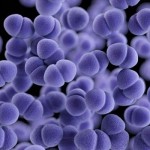 Title: Ability to reduce MRSA (ANTIBACTERIAL EFFICACY)
Title: Ability to reduce MRSA (ANTIBACTERIAL EFFICACY)Date: June, 20, 2011
Tested by: KCL Co., Ltd., Korea
Director of Korea Environment Merchandise Testing Institute
SUDO Premium Engineering Co., Ltd., Korea
* testing was done in a controlled setting, and the results of this test do not ensure the same affects in actual room conditions.
Results: The Nutrient Agar Medium Method of testing was conducted on the bacteria called MRSA. Bacteria was spread in a nutrient agar medium and put in an area with the cluster ionizer for four hours. Culture was incubated at 35°C for 24~48 hours. A reduction rate of 99.9% was calculated.
Ammonia
Title: Reduction in Ammonia
Date: June 20, 2003
Tested by: Plasma technology Infra Structure Center, Inha University
SUDO Premium Engineering Co., Ltd., Korea
* testing was done in a controlled setting, and the results of this test do not ensure the same affects in actual room conditions.
Results: 93% reductions in Ammonia VOC levels over a period of 2 hours.
Toluene

Title: Reduction in Toluene
Date: June 20, 2003
Tested by: Plasma technology Infra Structure Center, Inha University
SUDO Premium Engineering Co., Ltd., Korea
* testing was done in a controlled setting, and the results of this test do not ensure the same affects in actual room conditions.
Results: 92% reductions in toluene VOC levels over a period of 2 hours.
Trimethylamine

Title: Reduction in Trimethylamine
Date: January 13, 2006
Tested by: KTR, Korea Testing & Research Institute
SUDO Premium Engineering Co., Ltd., Korea
* testing was done in a controlled setting, and the results of this test do not ensure the same affects in actual room conditions.
Results: 60% reductions in trimethylamine VOC levels over a period of 6 hours.
Formaldehyde
Title: Reduction in Formaldehyde
Date: March 10, 2015
Tested by: Pinchin Ltd., Canada
Active Clean Environmental Corp., Canada
SUDO Premium Engineering Co., Ltd., Korea
* testing was done in an actual setting, though the test results prove efficacy each environment will yield different results
Results: the use of the ion cluster was able to reduce the total formaldehyde VOC in the tested environment.
Safety
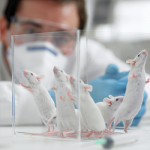
Title: Subchronic Safety Test for Ion Cluster in Mice
Date: August 13, 2008
Tested by: Laboratory Animal Research Center, College of Veterinary Medicine, Konkuk University, Seoul, Korea
SUDO Premium Engineering Co., Ltd., Korea
Acts, Jeongbalsan-dong, Ilsandong-gu, Gyeonggi, Korea
MJ LTD, c-305 Woolim Lions-Valley, Seoul, Korea
* These tests were held to ensure the safety of the ion cluster technology for physical and biological mechanisms.
Results: The animals were analyzed for body weight, water intakes, feed intakes, blood pressure, heart rate, organ weight, histopathology (cornea, trachea and lung), hematology, and blood chemistry in 11 and 22 weeks, control versus treatment groups. The study demonstrates that Ion Cluster not cause any toxicological signs, and is safe in the air of the laboratory animal facility.



